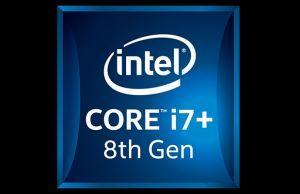According to Intel, up to 15° C variance in core temperatures is considered within specs.
jojesa,
I'm very interested in learning where you found this information.
Unless I somehow missed it during my research through Intel's Core i and Core 2 Datasheets dating back to 2006, I'm not aware of any such thermal specification. However, the Datasheets do state that Intel’s specification for
Digital Thermal Sensor (DTS) accuracy is +/- 5°C.
Section 5.1.5.2.1 - Digital Thermal Sensor Accuracy (Taccuracy) - "
The error associated with DTS measurements will not exceed +/-5°C within the entire operating range."
See page 95 - 8th and 9th Generation Intel® Core™ Processor Families Datasheet, Volume 1 -
https://www.intel.com/content/www/u...core/8th-gen-core-family-datasheet-vol-1.html
This means with all Cores fully and equally loaded with a steady-state 100% TDP workload (such as Prime95 v26.6 Small FFT's), deviations between the highest and lowest Cores should not exceed 10°C.
If the highest sensor is +5°C above nominal while the lowest sensor is -5°C below nominal, then the deviation would be 10°C. If the deviation is instead 15°C, that would put the CPU out of spec by 5°C. Although sensors are factory calibrated, in reality, Core temperatures tend to be more accurate at high temperatures for "Throttle" protection (100°C). But due to calibration issues such as linearity, slope and range,
idle temperatures may be less accurate than load temperatures.
Nonetheless, as you point out in your following statement, deviations on processors that have an uneven application of TIM might exceed 10°C by several degrees.
Sometimes the way thermal paste was applied or if the heatsink wasn't tighten properly could increase the temperatures.
The temperatures discrepancy could be related to the CPU internal TIM, in which case there isn't anything you could do....besides returning it.
Respectfully, while your statement in the first sentence is certainly true, the second sentence is not. As the Lenovo y7000 is a laptop, and mobile processors don't have an Integrated Heat Spreader (IHS), the cooler is mounted directly on the Die. Therefore, the only "internal" TIM on that i7-8750H is between the Die and the cooler, which means the laptop should be re-TIM'd under Lenovo's warranty, since it's out of Intel's "Taccuracy" spec.
CT 😎


